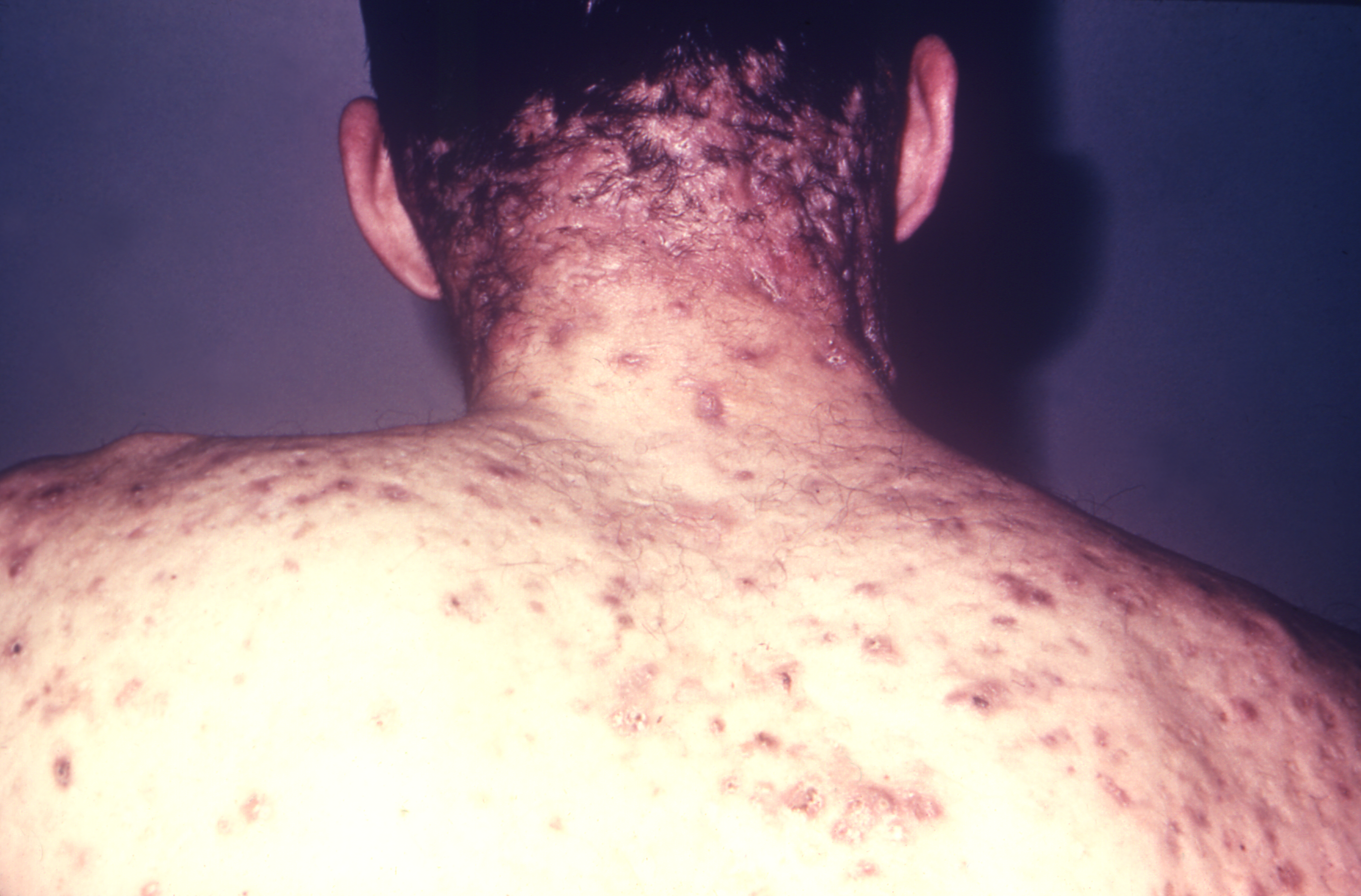- Acne
- Actinic Keratosis
- Aesthetics
- Alopecia
- Atopic Dermatitis
- Buy-and-Bill
- COVID-19
- Case-Based Roundtable
- Chronic Hand Eczema
- Chronic Spontaneous Urticaria
- Drug Watch
- Eczema
- General Dermatology
- Hidradenitis Suppurativa
- Melasma
- NP and PA
- Pediatric Dermatology
- Pigmentary Disorders
- Practice Management
- Precision Medicine and Biologics
- Prurigo Nodularis
- Psoriasis
- Psoriatic Arthritis
- Rare Disease
- Rosacea
- Skin Cancer
- Vitiligo
- Wound Care
Publication
Article
Dermatology Times
Utilizing Naturally Occurring Compounds for Treatment of Coexisting Vitiligo and Psychiatric Conditions
Author(s):
Vitiligo and psychiatric disorders share a strong connection, with up to 90% of vitiligo patients having comorbid psychiatric conditions.
MandriaPix/Adobe Stock

Up to 90% of patients with vitiligo have a comorbid psychiatric disorder such as anxiety, depression, obsessive-compulsive disorder (OCD), manic disorder, bipolar disorder, and schizophrenia.1 There is a bidirectional relationship between vitiligo and psychiatric disorders, in which they affect and exacerbate each other. Anxiety is the most common psychiatric disorder occurring in patients with vitiligo and depression is prevalent in 40% of patients.1
There have been multiple theories as to the pathogenesis of vitiligo involving oxidative stress, autoimmunity, and alteration of melanogenesis. Recent literature has suggested that vitiligo and some psychiatric disorders share similar pathogenetic pathways, which could explain the strong association. For example, OCD and schizophrenia have similar increases in proinflammatory cytokines such as IL-1, IL-6, and tumor necrosis factor (TNF)-α as in vitiligo.1 There is a higher cost associated with co-occurring vitiligo and mental health compared with mental health costs without vitiligo—an estimated $10 million in excess annual costs for hospitalization in a 10-year period.1 Thus it is important for dermatologists to be aware of and address the psychological consequences of vitiligo.
Children affected by vitiligo are more likely to develop anxiety and depression than adults with vitiligo. Children are more self-conscious about their physical appearance due to difficulty covering exposed areas with makeup and lesions in the genital area that alter sexual perception in development. In adolescents, the affected areas and duration of symptoms can predict psychiatric symptom development. However, association between the proportion of affected body surface area and severity of vitiligo has not been well studied. Levels of cortisol and dehydroepiandrosterone, on the other hand, have been related to vitiligo severity and prevalence of psychiatric disorders.
There are multiple antidepressants that have great efficacy in treating depressive symptoms of vitiligo; these include monoamine oxidase inhibitors, tricyclic antidepressants, serotonin/norepinephrine reuptake inhibitors, and serotonin antagonist and reuptake inhibitors. The monoamine hypothesis states that depletion of serotonin, norepinephrine, and/or dopamine levels in the nervous system lead to depressive systems. Thus, these antidepressants have an overall mechanism to increase the amount of these neurotransmitters in the synaptic space. However, the adverse effects from these medications—such as nausea, sexual dysfunction, insomnia, somnolence, bruxism, and weight gain—often lead to treatment discontinuation. Because vitiligo and associated psychiatric conditions are chronic, there is a push toward finding natural alternatives to improve treatment adherence. Naturally occurring compounds such as flavonoids have antioxidants, as well as anti-inflammatory and neuroprotective properties that could be beneficial in the treatment of patients with vitiligo and mental health concerns.

Breaking Down Compounds
Overproduction of reactive oxygen species and deficiency of antioxidant enzymes leads to melanocyte damage. The natural compound nuclear factor erythroid 2–related factor 2 (Nrf2) can improve the antioxidant activity of melanocytes.
Baicalein derived from Scutellaria baicalensis Georgi is a flavonoid that can upregulate the Nrf2 signaling pathway and protect melanocytes from oxidative stress. Additionally, baicalein upregulates brain-derived neurotrophic factor, which has been shown to play a role in depression. Thus, baicalein can improve vitiligo management and depressive symptoms.
Quercetin is another flavonoid with anti-inflammatory, antioxidant, and neuroprotective effects and is found in apples, onion, asparagus, dill, and black tea. Quercetin has been found to increase intracellular tyrosinase activity involved in melanogenesis and stimulation of melanogenic enzymes. Additionally, quercetin regulates serotonin to treat anxiety and depression.
Kaempferol, found in tea, broccoli, apples, strawberries, and beans,2 is a flavonoid that inhibits malignant proliferation and has neuroprotective properties. Although the mechanism remains unclear, kaempferol stimulates melanogenesis in a dose-dependent manner similar to quercetin. Kaempferol also reduces inflammatory cytokines such as TNF-α or IL-1β that have been implicated in the pathogenesis of inflammation in vitiligo and mental health disorders. In vitro and in vivo studies have demonstrated the anxiolytic effect of kaempferol and thus it remains another natural compound suitable for vitiligo and mental health management.
Epigallocatechin-3-gallate (EGCG), found in green tea, is a polyphenolic catechin with antioxidant and anti-inflammatory effects. Due to reduced oral bioavailability, EGCG is used topically to treat genital warts and its effect in vitiligo management is still being investigated. However, EGCG has been observed to reduce reactive oxygen species production in human epidermal melanocytes. Mouse studies have shown that topical administration of EGCG reduces serum levels of inflammatory cytokines such as TNF-α, IFN-γ, and IL-6 in mice with monobenzone-induced vitiligo.1 The downstream targets of IFN-γ include JAK2 and STAT1/3, which are involved in the pathogenesis of vitiligo, and the downstream target of IL-6 includes STAT3, involved in anxiety. Although EGCG has been found to be helpful in treating anxiety and depression, it is ineffective in patients with schizophrenia and bipolar disorder.
Curcumin derived from turmeric is a polyphenolic compound with anti-inflammatory, antimicrobial, and antioxidant properties. Its beneficial effects in improving the quality of life of patients with depressive and anxiety symptoms has been demonstrated, but its efficacy in vitiligo has not been identified. It is proposed that curcumin may activate the Nrf-2 signaling pathway to protect melanocytes from oxidative stress in a similar manner to baicalein. Curcumin’s anti-inflammatory ability to inhibit IFN-γ has been demonstrated in psoriasis but not in vitiligo. One study found that the combination of curcumin cream and UV-B phototherapy did not significantly improve repigmentation in patients with vitiligo compared to phototherapy treatment alone, though this may be limited due to the small sample size.3 Further study is needed to evaluate curcumin’s effects in management of vitiligo.
Cannabidiol (CBD) is the nonpsychoactive component of Cannabis sativa L. Animal and human studies have shown that CBD can be beneficial in treating anxiety, depression, and schizophrenia. Its effects on skin diseases are being investigated, and studies have shown that CBD may protect against oxidative stress by activating Nrf-2. CBD additionally has anti-inflammatory properties by inhibiting inflammatory cytokine production. Although it has not been established, it has been proposed that the cannabinoid 1 receptor may play a role in melanogenesis and should be further investigated for adjuvant therapy use in vitiligo.
Glycyrrhizin is a glycoside extracted from licorice (Glycyrrhiza glabra) that has anti-inflammatory, antioxidant, and antiviral properties. It has been shown to induce Nrf-2 in human melanocytes, protecting them from reactive oxygen species. Glycyrrhizin also acts to increase tyrosinase levels involved in melanogenesis in a dose-dependent manner and to stimulate cyclic adenosine monophosphate (cAMP) activation involved in melanogenesis.4 One study found that adjuvant therapy with glycyrrhizin actually improved repigmentation in vitiligo lesions in 87.5% of patients treated with UV-B irradiation.5 Glycyrrhizin regulates neurotransmitters and may normalize serotonin fluctuations as seen in mouse models, demonstrating potential anxiolytic and antidepressive effects.
The pathogenesis of vitiligo is a multifactorial combination of genetics, psychological stressors, and oxidative damage. Vitiligo has a high association with anxiety, depression, and other psychiatric conditions. Thus, management of vitiligo should also aim to target these mental health aspects. Due to their anti-inflammatory, antioxidant, and mood-regulating properties, naturally occurring compounds may serve as safe, long-term treatment options in managing vitiligo and psychiatric disorders. In vitro and in vivo models have demonstrated these benefits, but there remains a need for clinical trials to validate and further investigate these mechanisms in patients with vitiligo and mental health disorders.
Bernard Cohen, MD
Jordan Bui is a third-year medical student at Georgetown University School of Medicine in Washington, DC.
Bernard Cohen, MD, is a professor of pediatrics and dermatology at Johns Hopkins University School of Medicine in Baltimore, Maryland.
References
- Di Bartolomeo L, Custurone P, Irrera N, et al. Vitiligo and mental health: natural compounds’ usefulness. Antioxidants (Basel). 2023;12(1):176. doi:10.3390/antiox12010176
- Chen AY, Chen YC. A review of the dietary flavonoid, kaempferol on human health and cancer chemoprevention. Food Chem. 2013;138(4):2099-2107. doi:10.1016/j.foodchem.2012.11.139
- Asawanonda P, Klahan SO. Tetrahydrocurcuminoid cream plus targeted narrowband UVB phototherapy for vitiligo: a preliminary randomized controlled study. Photomed Laser Surg. 2010;28(5):679-684. doi:10.1089/pho.2009.2637
- Lee J, Jung E, Park J, et al. Glycyrrhizin induces melanogenesis by elevating a cAMP level in b16 melanoma cells. J Invest Dermatol. 2005;124(2):405-411. doi:10.1111/j.0022-202X.2004.23606.x
- Mou KH, Han D, Liu WL, Li P. Combination therapy of orally administered glycyrrhizin and UVB improved active-stage generalized vitiligo. Braz J Med Biol Res. 2016;49(8):e5354. doi:10.1590/1414-431X20165354

Newsletter
Like what you’re reading? Subscribe to Dermatology Times for weekly updates on therapies, innovations, and real-world practice tips.


























